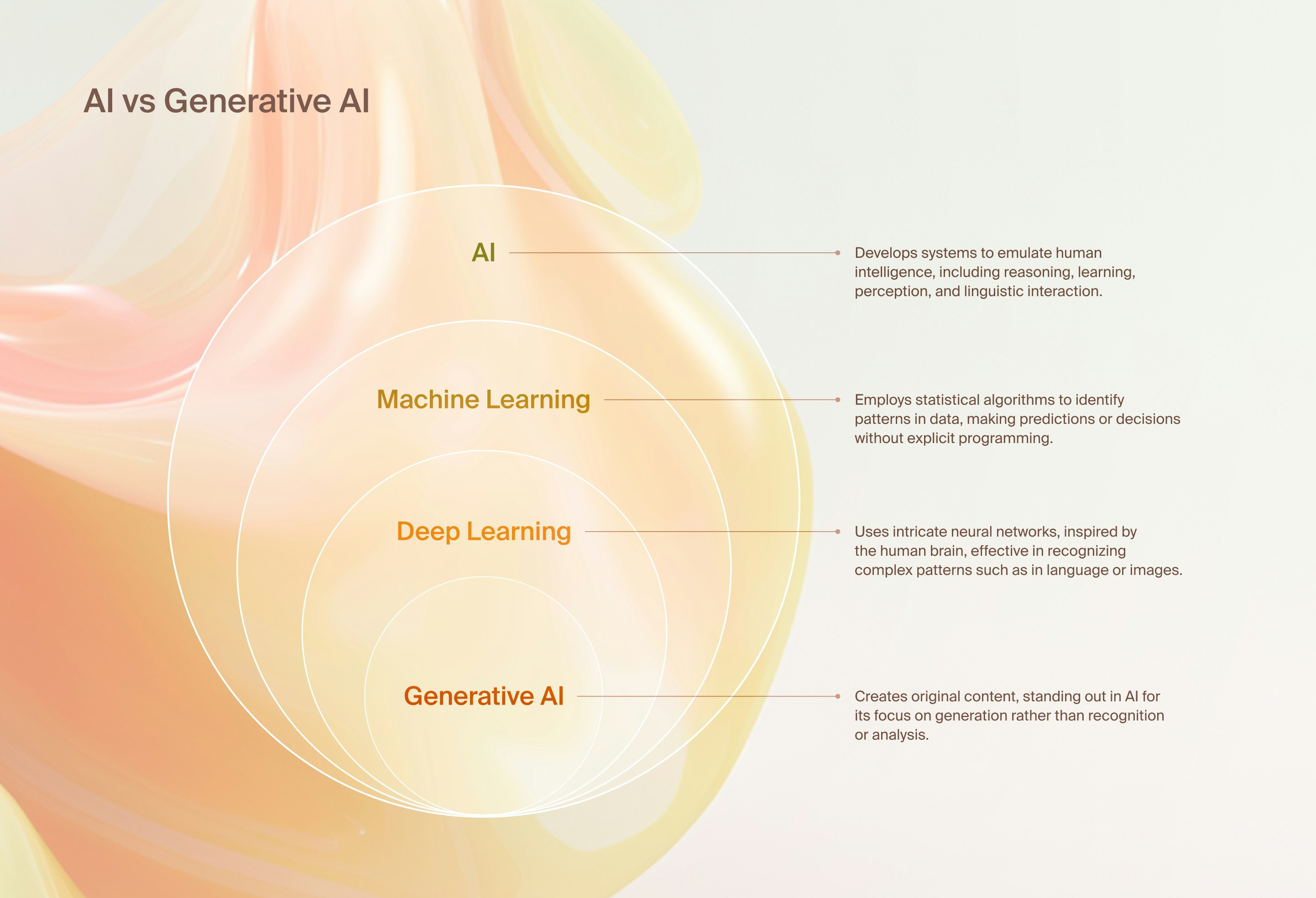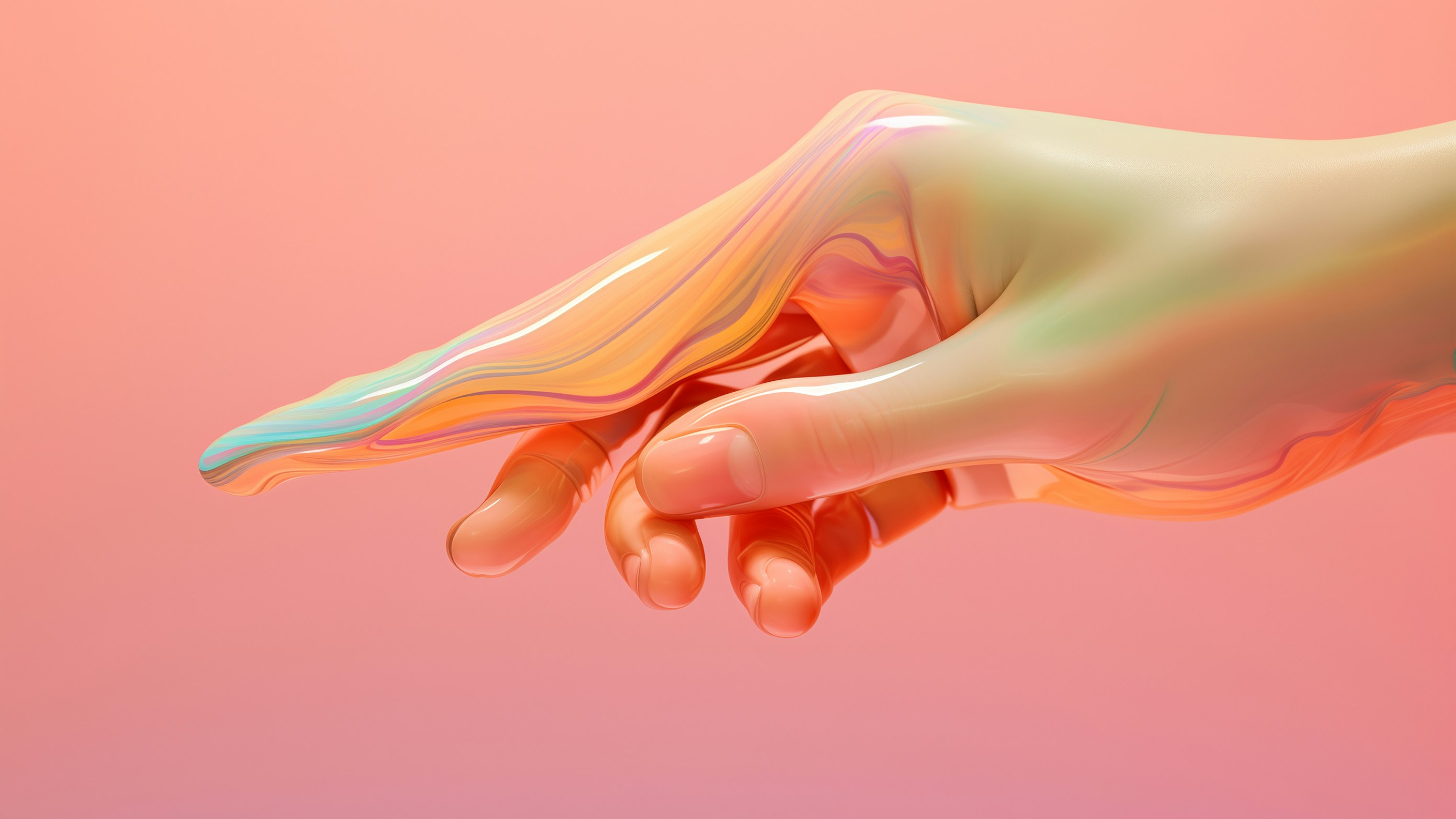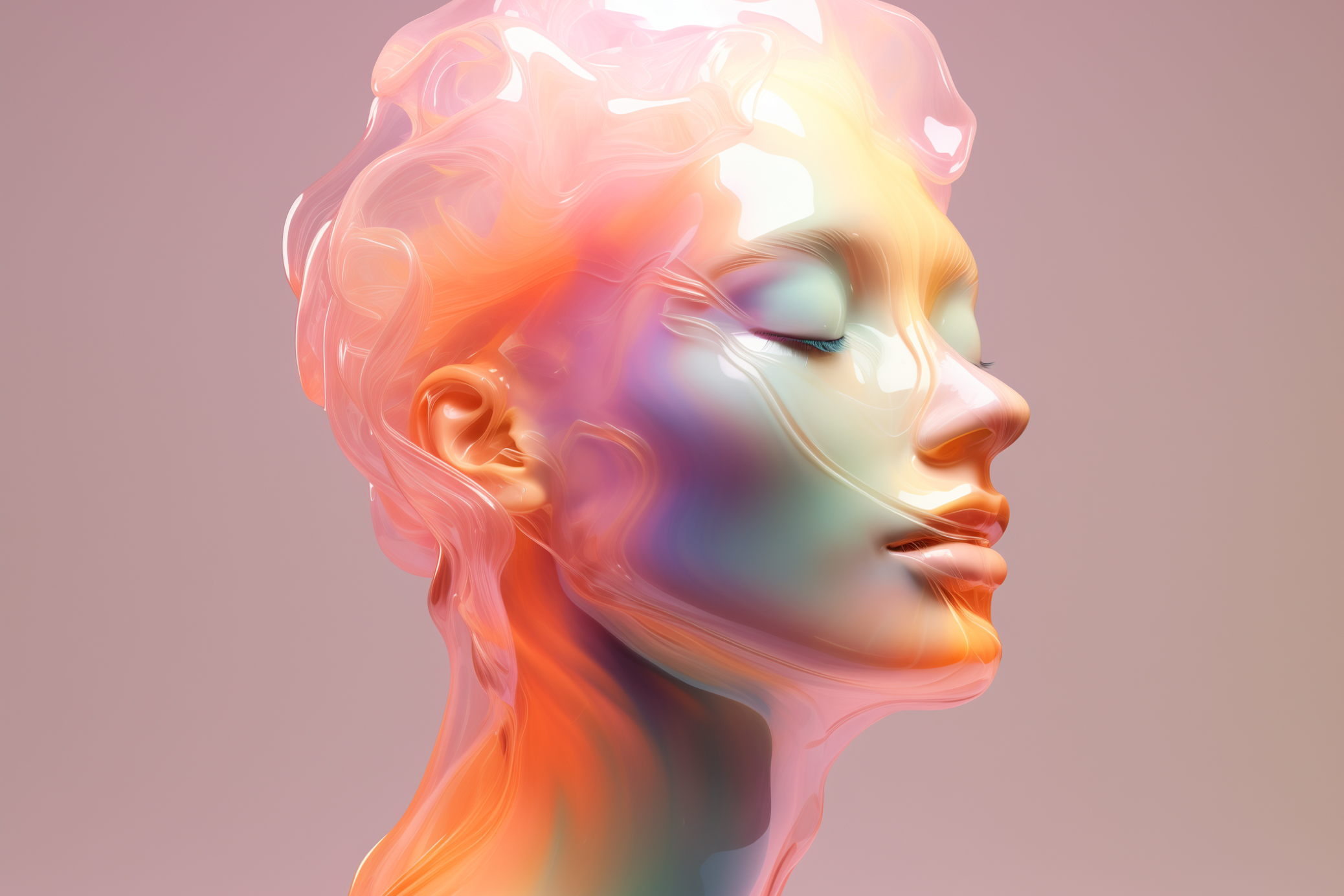This article is part of a series that collects the studio’s reflections on AI themes and their applications. Sign up for the Sketchin newsletter so you never miss any story by us.
Design now finds itself at an evolutionary crossroads: the discipline, once the exclusive domain of human intuition and creativity, welcomes a new protagonist: artificial intelligence. AI, through technologies such as machine learning, deep learning, generative AI, and natural language processing, opens up a dimension of learning, adaptability, and semi-autonomy previously unthinkable. At the same time, AI systems have all the requirements to be not just assistants, but active co-creators in the design process.
When properly trained, AI has the ability to rapidly process new textual and visual content, suggest new layouts, concepts, and even entire user experiences based on data analysis and predictive models. Moreover, AI can anticipate emerging trends and preferences, guiding designers towards forward-looking and innovative solutions, expanding the creative horizon, and allowing for precise customisation of experiences according to the expectations and needs of the end users.

AI vs Generative AI
AI, Sketchin, and Dot, our design method
At Sketchin, we are initiating a path of experimentation, awareness, and sharing on how to integrate AI into our working method.
There are three directions in which we are assessing the effectiveness of AI tools in the design process:
- The individual dimension: assessing the capacity and effectiveness for a designer to access any data in seconds and to make use of the learning and memories of an autonomous AI agent or tool.
- The collective dimension: assessing the effects of AI on the cohesion and collaboration of the design team. By combining technical skills, relational and communication skills, AI will become an integral part of the team itself.
- The strategic dimension: assessing the ability of design teams and clients to collaboratively orchestrate strategic decisions, leveraging the help of an AI agent board or the use of gen AI tools.

Where is AI integrated in our design process?
We have therefore tried to incorporate various AI tools into our Dot - Design Over Time design process:
- Frame | Research: combining traditional research and critical thinking, which are indispensable, with AI-enhanced research techniques to make more informed decisions, intercept trends and weak signals, identify biases in market research, and include the perspective of less represented users.
- Foster | Ideation: combining traditional and synthetic ideation techniques to generate ideas more quickly and in-depth.
- Design | Validation: testing initial prototypes with clients and synthetic personas, verifying their needs are met and intercepting the perspectives of potential users who are excluded or under-represented.
- Scale | Go-to-market and production: testing the market positioning of a new product or service through the activation of co-pilots, identifying and reducing biases in design, content, marketing, and even its underlying algorithms.

How we use AI tools at Sketchin
At Sketchin, we use Generative AI tools mainly for three purposes:
Enhancing creativity
Design Assistants and Modeling Software: these tools, learning from designers and adapting to their styles and preferences, propose original content based on data analysis and UX/UI trends. This amplifies the creative potential by providing fresh ideas and perspectives.
Optimising workflow
Integrating generative AI into design processes transforms how the design team performs tasks, becoming a full-fledged part of the team and streamlining the process. Depending on the situation, AI can be:
- An assistant for repetitive tasks: with the correct instruction of prompts, we can handle even the most tedious tasks quickly and effectively—i.e. creating layout variations or adapting designs and ideas—allowing designers to focus primarily on the creative and strategic aspects of the project.
- A colleague for project management: AI can track time, organise resources, and identify waste for more efficient resource use.
- A divergent generator: AI can quickly adapt to changes in client requests, producing a variety of design solutions in record time and broadening the spectrum of possibilities.
- An advisor: AI tools provide instant feedback and useful suggestions during the creative process, allowing designers to learn from each project.
Personalisation, analysis and prototyping
AI enables advanced customisations and large-scale applications and facilitates the creation of designs adaptable to different markets and demographics. The analysis of large volumes of data provides a detailed understanding of user preferences, guiding the design of tailored experiences.
AI-based interfaces have the ability to dynamically adapt, offering a level of hyper-personalisation that can be extended to large masses of users. This is possible thanks to the thorough and accurate analysis of data and insights, allowing interfaces to respond to individual needs in a specific and targeted manner, despite being applied on a large scale.
Generative AI also identifies user trends and preferences, develops predictive solutions, and, if properly trained, offers elements for more inclusive and innovative projects. Generative AI tools are also transforming the prototyping and testing phases, which become faster and more iterative.

Ethics, sustainability, inclusivity and transparency
The adoption of AI in design also raises important questions about ethics and sustainability. Without visible indicators, we are unable to perceive the environmental impact produced by the energy consumption of generative technologies. Therefore, a more targeted and conscious use of these tools not only improves their effectiveness but also reduces our impact on the environment.
Ethical responsibility: it is no secret that AI tools reflect the biases and ideologies of those who use them, which generates significant ethical implications. The creation of tools that operate justly is also the aim of the AI Act recently issued by the European Union to ensure that AI systems used in the EU are safe, transparent, traceable, non-discriminatory, and respectful of the environment and people. The regulation emphasises the importance of human supervision to prevent adverse outcomes.
The challenge for designers and companies is to find a virtuous balance between the potentials of AI, the possible economic benefits deriving from their unrestricted use, and the respect for legal and ethical norms.
Inclusivity: AI can help us create products and services accessible to a wide range of users, including those with disabilities or special needs. Dialogue with AI can bring a different perspective, helping us to address any internalised biases and forcing us to question a possibly subjective view of research and situations.
Transparency and accountability: To build trust, it is essential to ensure transparency and accountability in the use of AI in design, raising awareness of its potential social implications, and promoting responsible design practices.

The designer in the era of Artificial Intelligence
The designer becomes an orchestrator capable of integrating human intuition and the power of AI. The challenge lies in the balance between aesthetics, usability, functionality, and AI innovation, aiming for advanced but intuitive solutions.
The evolution of the designer’s role involves defining a renewed “toolbox” that integrates traditional techniques with advanced AI. Interaction with AI not only improves human communication skills but also requires a balance between AI technology and human sensitivity to create empathetic and accessible projects. Generative AI promotes a systemic approach, offering an integrated and detailed view, highlighting correlations and impacts on the system, and facilitating smooth connections.
But, revisiting McLuhan’s concept of extension-amputation, every extension of the human body—whether mechanical or intellectual—expands our possibilities but also reduces our natural abilities. In this context, if AI is used to enhance team work, it must expand our capabilities without sacrificing too much of our analysis.
The design process thus becomes informed and coherent at every stage, considering the consequences of each decision. Designers will increasingly have to think and design solutions valid for both humans and AIs, considering AI agents as true coworkers in the design process. However, they should never abandon the analytical and critical spirit that distinguishes the profession.
Contact us
Write to us to find out more about integrating AI in design and how to exploit the potential of AI to enhance your innovation process.




